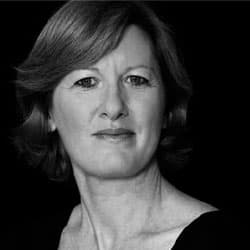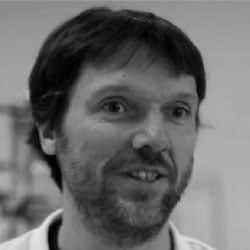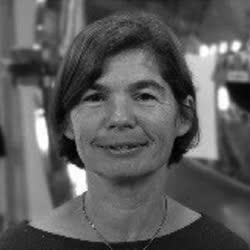
Natural and archaeological analogues
From the past to the future
PERSPECTIVES
 Lucile Beck is head of the CEA Carbon 14 Measurement Laboratory (Climate and Environmental Sciences Laboratory)
Lucile Beck is head of the CEA Carbon 14 Measurement Laboratory (Climate and Environmental Sciences Laboratory)
 Philippe Dillmann is research director at the CNRS and deputy director of the UMR3685 “Nanosciences and innovation for materials, biomedicine and energy” (CEA/CNRS)
Philippe Dillmann is research director at the CNRS and deputy director of the UMR3685 “Nanosciences and innovation for materials, biomedicine and energy” (CEA/CNRS)
 Karine Froment is Director of ARC-Nucléart
Karine Froment is Director of ARC-Nucléart
CEA has been able to accompany developments in the field of research which, for many years now, has been using the best available methods in physics and chemistry to examine material that has come down to us from the past. This material is a tenuous link between this past reality (as described by Etienne Klein in the introduction) and our own, enabling us to gain glimpses of it, like the shadows on the wall of Plato’s cave.
In this general approach, CEA benefits from the power of its analytical resources and its platforms (built on lengthy experience in the field), placing their technological progress at the disposal of science (tomography, synchrotrons, irradiation, mass spectrometers, etc.). This progress and these techniques would however be of little use if not deeply integrated into cross-disciplinary archaeological and historical approaches. In increasingly close collaboration with those of other institutions (CNRS, Ministry of Culture, etc.), the CEA laboratories are adopting global approaches which mean that one no longer analyses an archaeological artefact, a sculpture, a painting, a monument as one did in the middle or even the end of the last century, and restoration work is carried out using different techniques and a different ethical approach: mutual collaboration between the “exact” sciences and the human sciences now opens the door to better overall understanding, placing the actual physical object at the heart of its context and its history.
This is why methodological and analytical developments cannot be effective if disconnected from reality. On the contrary, as we have seen through the numerous examples in this number, they must be developed and adapted in symbiosis with a more general understanding of the systems being studied, which are heterogeneous at different scales. Within this epistemological framework, whether one is attempting to understand ancient societies, the process of alteration of objects or to develop methods of protection, the challenges are many and varied:
n Laboratories and researchers must be constantly on the watch for new and emerging technologies. These are more than just isolated analysis methods and must be open to all possible approaches;
n Future advances must help us share our efforts between the representative analysis of large series of objects with appropriate methods, including statistical processing of the results and the ultrafine (and necessary) analysis up to nanometre level for certain objects;
n The storage and processing of the increasingly massive quantities of data generated by the laboratories. These are totally heterogeneous and, for interaction with the interdisciplinary approaches we have just mentioned, must be coupled with other data (archaeological, historical, etc.);
n Finally, this research must be integrated into interdisciplinary structures, for the development of heritage science, itself interdisciplinary, integrated and structural: national initiatives already exist, in both teaching and research projects. The recent proposals emerging from the large national and European instruments, the aim of which is to merge more closely with the human sciences, should not forget and should even reinforce the very real existence of the well-structured, living, deep-rooted, and innovative interdisciplinary community of which CEA is an integral part, in collaboration with other university structures. One could mention ARC-Nucléart, LMC14 or LAPA, where physicists and chemists meet archaeologists, curators and restorers. This confidence has not been created out of thin air and is the result of joint research and investigation carried out for many years. It must however be constantly maintained by a lasting, demanding and permanently enhanced dialogue.
The major challenge for the future of this community is to continue to advance our scientific knowledge of the material and cultural heritage, by converging all viewpoints, both scientific and historical. n
 More (2,30 min.)
More (2,30 min.)

Natural and archaeological analogues